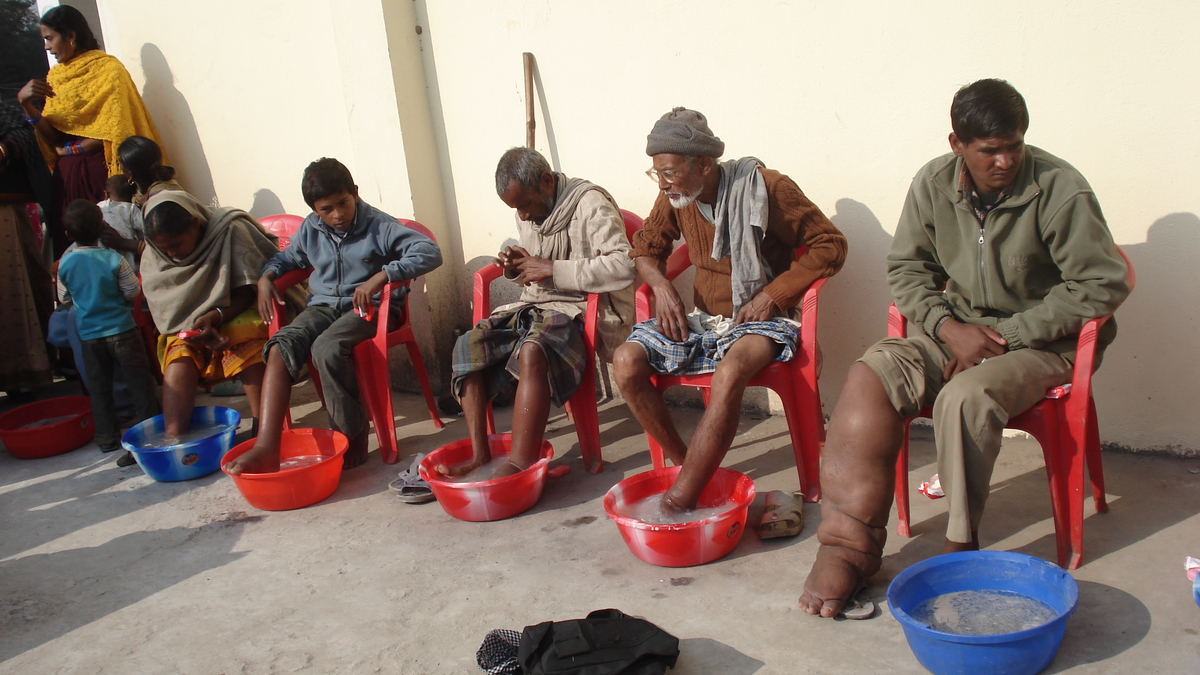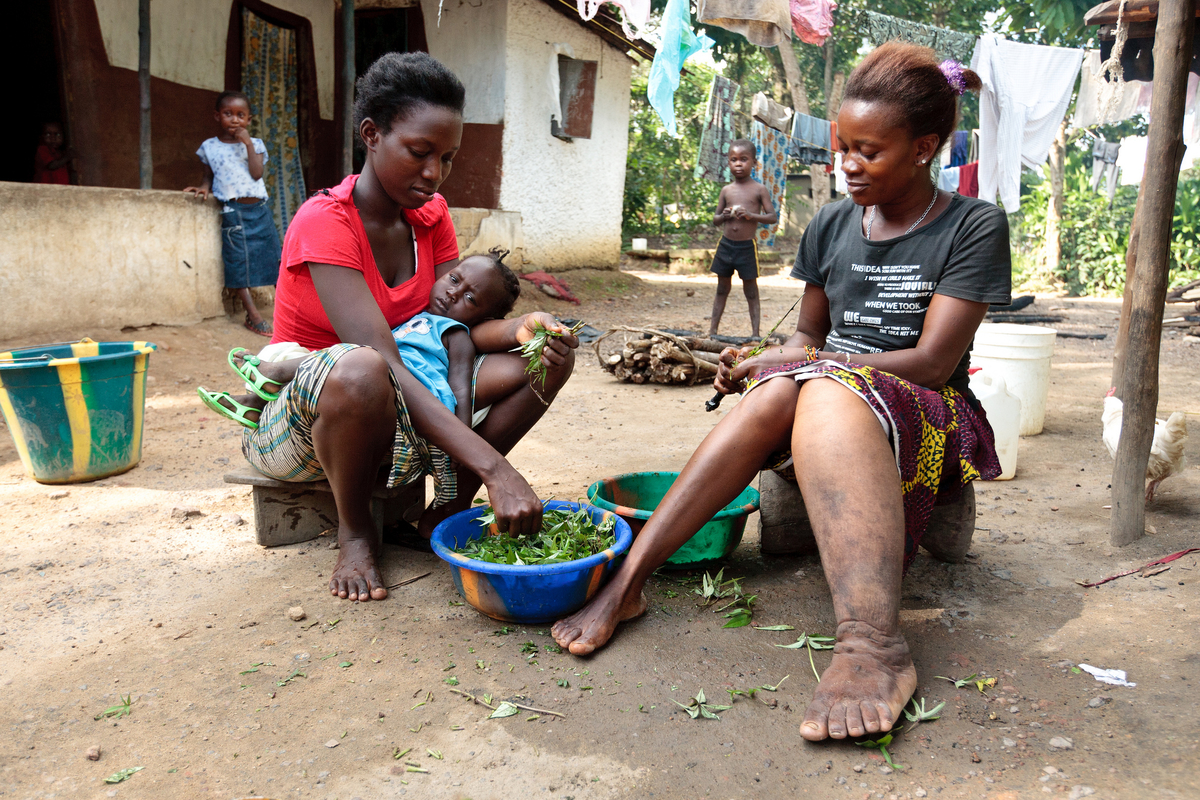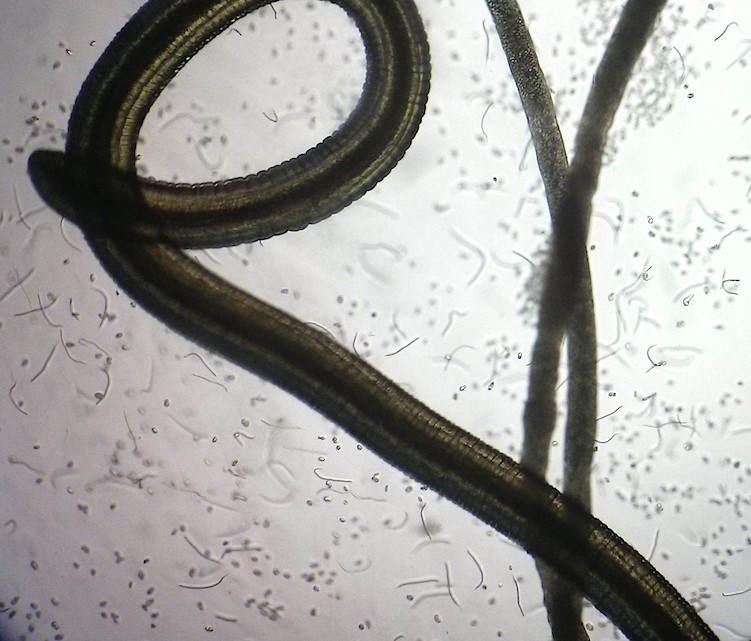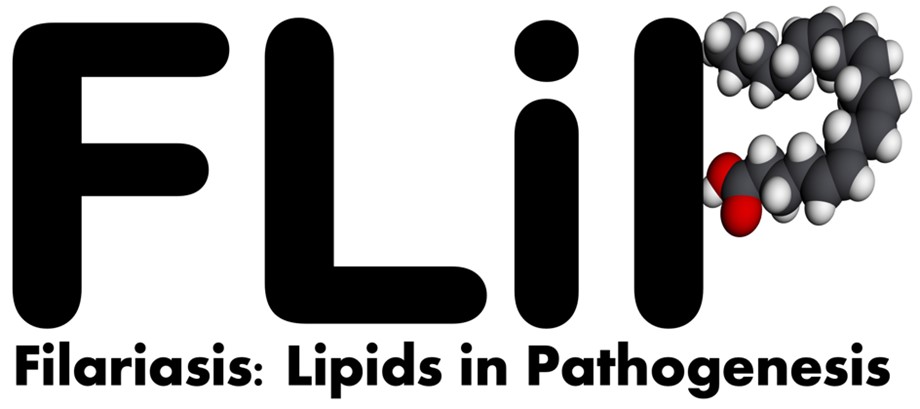FLiP (Filariasis: Lipids in Pathogenesis) is a five-year research programme funded by the Medical Research Council (MRC). It aims to advance the World Health Organization (WHO) neglected tropical disease (NTD) 2030 Roadmap which calls for innovations in therapies for lymphatic filariasis and onchocerciasis to reduce severe morbidity.
Researchers will explore the therapeutic potential of targeting bioactive lipids to create new treatments for filariasis. Their goal is to make existing treatments, like ivermectin, safer for people carrying the Loa loa parasite, and to reduce long-term damage caused by chronic lymphatic filariasis (LF).
Aims and Objectives:
The project will aim to answer four primary research questions:
- What are the bioactive lipidomes associated with acute or chronic filarial immunopathology?
- What are the host and parasite sources of bioactive lipids during experimental acute or chronic filarial immunopathology?
- What are the functions of bioactive lipids in type-2 inflammation during situations of acute or chronic filarial immunopathology?
- Can affordable pharmacological or dietary interventions targeting specific bioactive lipid pathways ameliorate acute or chronic filarial disease?
By the end of the programme, FLiP will have a clear understanding of how to safely and effectively use existing, low-cost medicines to target bioactive lipid pathways.
This could help reduce harmful inflammatory adverse reactions from Loa loa treatments and ease long-term problems caused by chronic lymphatic filariasis, making it quicker and easier to conduct clinical repurposing evaluations in target populations.
The FLiP team
FLiP is headed by principal investigator Professor Joseph Turner from the Centre for Drugs and Diagnostics (CDD) and the Centre for Neglected Tropical Diseases (CNTD) at Liverpool School of Tropical Medicine (LSTM).
Co-investigators include: Professor Royston Goodacre, Director of The Centre for Metabolomics Research (CMR) at the University of Liverpool, Professor Samuel Wanji, the Head of Department for Microbiology and Parasitology at the University of Buea, Professor Mark Taylor, the Director of the CNTD at LSTM, and Dr Shrilakshmi Hegde, who will act as researcher-co-investigator and is a post-doctoral research assistant at LSTM.
The PhD project of Bethany Batterley will also support the goals of FLiP and the programme will be supported by Research Technician Andrew Steven, and Research Assistant Jessica Dagley.
FLiP collaborations
FLiP will work closely with quantitative lipidomics experts at Cardiff University led by Professor Valerie O'Donnell and tropical medicine experts at Sacro Cuore Don Calabria Hospital, Negrar di Valpolicella, Italy.
A background to FLiP
Filarial diseases, such as loiasis, lymphatic filariasis and onchocerciasis, are vector-borne diseases caused by filariae, a type of roundworm, infecting the blood, eyes, lymphatics and skin.
LF causes non-hereditary lymphoedema, classified as a leading cause of global disability, with 36million individuals suffering stigmatising chronic morbidities, such as elephantiasis or hydrocoele, which can drive depressive illness. Learn more: www.jci.org/articles/view/140853.
Onchocerciasis, also known as river blindness, affects an estimated 25million individuals with the majority in Sub-Saharan Africa. It is the second leading infectious cause of visual impairment and is implicated in the terminal neurological condition, Nodding Syndrome. Learn more: www.ncbi.nlm.nih.gov/pmc/articles/PMC7802695/.
Annual treatment within affected communities can temporarily prevent transmission but does not cure infection, stop lymphedema in LF patients, and can cause severe adverse reactions (SAEs) following anti-filarial treatment in individuals infected with a high burden of Loa loa. Learn more: www.frontiersin.org/articles/10.3389/fitd.2021.778724/full.
LF and onchocerciasis are therefore prioritised for global or regional elimination as part of The WHO roadmap for 2021-2030. With no vaccines available, the WHO has called for new approaches to accelerate elimination, alleviate suffering, and improve the lives of those affected. Learn more: apps.who.int/gb/ebwha/pdf_files/EB150/B150_10-en.pdf.
The team will work from pilot data indicating inflammatory bioactive lipid pathways are causal in filarial disease. Therefore, the researchers are investigating bioactive lipids' role in type-2 immune-dependent filarial inflammation, the therapeutic potential of targeting specific biolipid pathways, and identifying the most effective and affordable oral drug therapies to block disease.
Related LSTM News:
Bangladesh eliminates lymphatic filariasis.
First in human trial for a new drug targeting LF and onchocerciasis starts in Liverpool.
Questions? Contact the FLiP team:
Professor Joseph Turner
Department of Tropical Disease Biology, Liverpool School of Tropical Medicine
Joseph.Turner@lstmed.ac.uk
Pictures from LSTM

https://awol.lstmed.ac.uk/target-diseases/lymphatic-filariasis

https://awol.lstmed.ac.uk/target-diseases/lymphatic-filariasis


